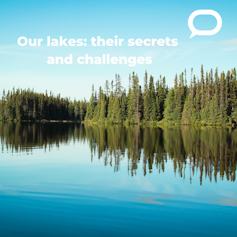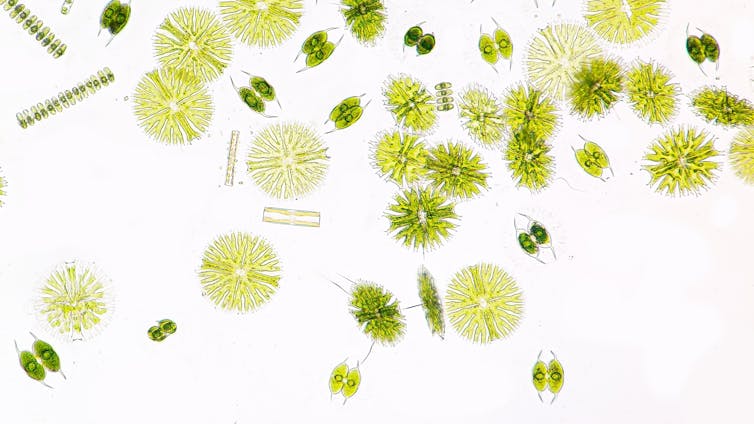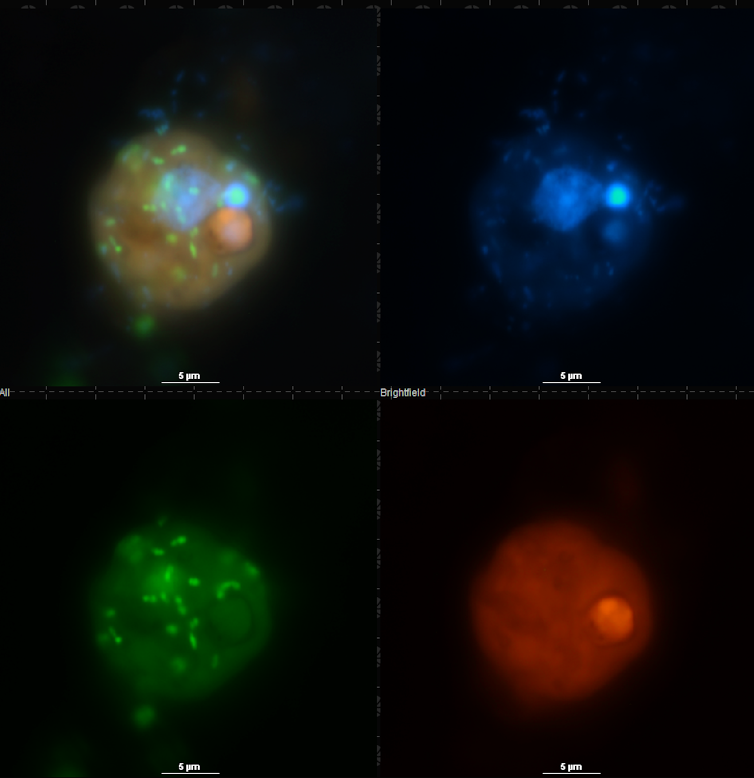
Plankton — tiny organisms that are present in salt and freshwater — account for about half of the photosynthesis on the planet. But what scientists have assumed for many years to be plant plankton (phytoplankton) may actually be voracious predators.
In lakes, plankton prey on single-celled bacteria that are in turn responsible for recycling nutrients that keep lake food webs functioning.
I am a researcher studying phytoplankton and zooplankton (animal plankton). In my lab, we focus on factors influencing the biodiversity and functioning of plankton communities, including climate change and pollutants into lakes.
We have recently been exploring bacterial feeding by phytoplankton, researching how and when they do it, and how various environmental conditions might affect their activity.

This article is part of our series Our lakes: their secrets and challenges. This summer, The Conversation invites you to take a fascinating dip in our lakes. With magnifying glasses, microscopes and diving goggles, our scientists scrutinize the biodiversity of our lakes and the processes that unfold in them, and tell us about the challenges they face. Don’t miss our articles on these incredibly rich bodies of water!
Energy transformers
Phytoplankton are mostly composed of microscopic single-celled organisms called protozoa (or protists). This refers to their initial identification as primitive animals (the suffix -zoa has the same root word as zoo) because, although they are small, they are often very mobile. Many of them can swim, sometimes at great speed, using long whip-like hairs called flagella.
Phytoplankton were initially identified as free-living, non-parasitic protozoa getting energy through photosynthesis. They use specialized cellular machinery called chloroplasts that allow them to convert light energy into glucose using water and carbon dioxide, just like land plants.
Phytoplankton release oxygen in this process and are an important reason as to why the Earth has a breathable atmosphere.
By photosynthesizing, phytoplankton in lakes and oceans are an important part of the battle against climate change, as this so-called “primary production” reduces carbon dioxide in the atmosphere.
To photosynthesize, phytoplankton also need nutrients like nitrogen and phosphorus. These are the primary components of fertilizers used in agriculture and gardens, and they are essential to phytoplankton. These nutrients can be lacking in lakes, especially more pristine lakes.
There can also be a lack of light for photosynthesis for phytoplankton living deeper in lakes. In both instances, it appears that some phytoplankton species can switch to preying on other organisms as a food source.

Predatorial plants
In addition to operating like plants, many phytoplankton species can be predatory — ecologists refer to these types of phytoplankton as mixoplankton.
This comes from the longer name of “mixotrophic phytoplankton,” meaning that they consume resources in a mixed way: in this case, using photosynthesis (photoautotrophy) and by consuming bacteria (heterotrophy).
Mixoplankton consume bacteria using a process called phagocytosis. They modify their cell membrane to completely engulf the prey bacterium, enclosing it within the cell.
Then this package pinches off inside the cell, forming a sac that operates like a small stomach, increasing acidity to digest the bacterium. The prey represents a package loaded with nutrients that the phytoplankton may not be able to otherwise obtain from the lake environment.

A recent proposition suggests that mixoplankton may “farm” bacteria. One of the most essential compounds that bacteria rely on for their growth is carbon. But they seem to prefer carbon that is released in a highly dissolved organic form by photosynthesizing phytoplankton.
Thus, while photosynthesizing, mixoplankton release carbon that helps the bacteria nearby grow better. But when photosynthetic activity is limited (by light or nutrients), these same mixotrophic phytoplankton may harvest the nearby cultivated bacteria to keep growing.
Dual strategies
Aquatic ecologists suspect that the mixoplankton strategy is mostly favoured when light or nutrients are limited — but research shows that mixoplankton may consume prey at higher temperatures.
It has proven difficult to study which strategy a mixoplankton is using under any set of environmental conditions in nature. Existing methods are difficult to implement and because there is no clear gene associated with bacterial consumption, we can’t pinpoint this activity with genomic analyses either.
One approach that we have taken in my lab has been to identify in which lakes we expect to see mixoplankton as more dominant. One of our studies has recently shown results contrary to model expectations however, with more mixoplankton in lakes with high nutrients.
So, we need to start measuring which strategy is actually being used under which conditions by mixoplankton. We can use ingestion experiments, adding bacteria that have been labelled using a fluorescence dye into isolated phytoplankton communities. These bacteria can be followed into mixoplankton cells and identified on specialized instruments.
We can also use fluorescent dyes that bind to bacterial DNA within mixoplankton cells. With these approaches, we are attempting to better understand under which conditions mixoplankton will choose which feeding strategy.
Accelerating climate change
We now have reason to believe that higher temperatures associated with climate change will favour mixoplankton over purely photosynthetic phytoplankton. Overall, such a shift would tip the balance away from phytoplankton reducing CO2 in our atmosphere to potentially contributing more CO2 to the atmosphere.
This is yet another potential feedback cycle that could result from massive shifts in the Earth’s biosphere — a shift that would help accelerate climate change even further. The seemingly inconsequential feeding behaviour of these tiny microbes in lakes and oceans could have global consequences.
Beatrix Beisner receives funding from NSERC and the FRQNT. She is Co-Director of the Groupe de recherche interuniversitaire en limnologie (GRIL), a research network of 12 Québec universities.
This article was originally published on The Conversation. Read the original article.







